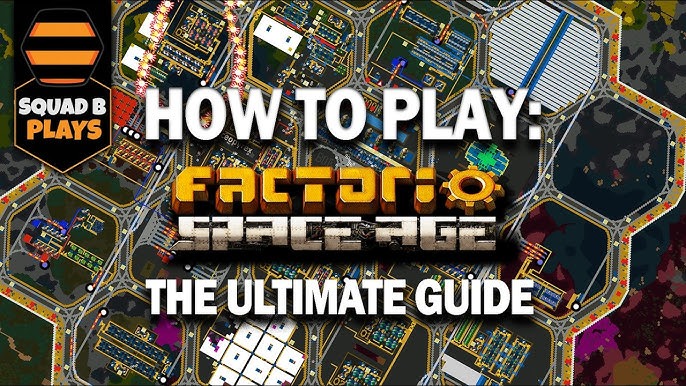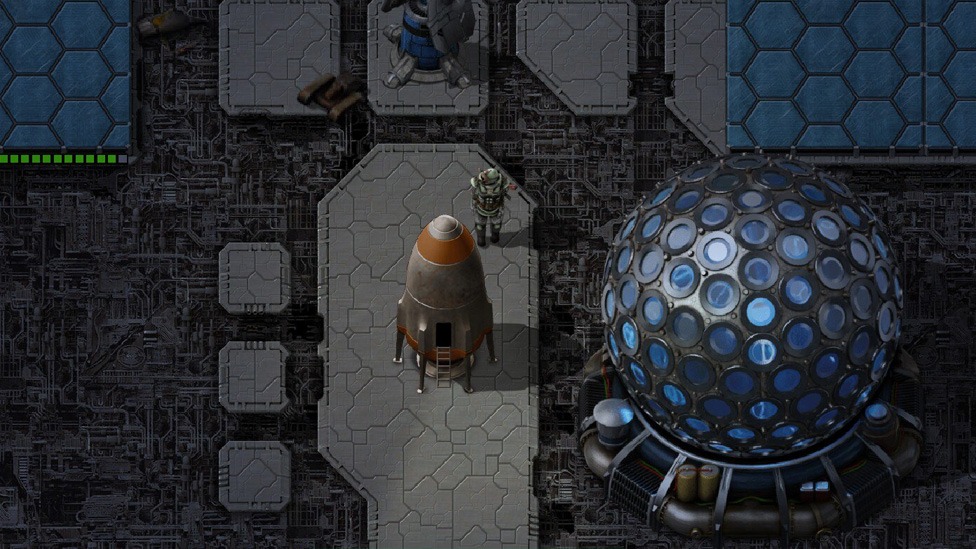Factorio Space Exploration Guide: Tips, Tricks & Beginner Strategies

If you’re a Factorio player moving into interplanetary territory, the Space Exploration mod radically transforms the game. Instead of “build rocket = done,” you now build orbital stations, explore alien worlds, automate cross-planet logistics, and chase deep space science. This guide gives you a solid foundation as a beginner—practical strategies, pitfalls to avoid, and tips seasoned players swear by.
What Is the Space Exploration Mod?
The Space Exploration mod (by “Earendel”) overhauls Factorio’s endgame: after launching the first rocket, the game continues across planets, moons, and asteroid belts. [oaicite:0]{index=0} You’ll build cargo rockets, orbital platforms, and eventually full spaceships.
Compared to vanilla Factorio, Space Exploration introduces:
- Many more science packs and tech branches
- New resources (Cryonite, Vulcanite, Holmium, Iridium, Naquium, etc.)
- Multiple celestial bodies to visit, each with unique environments, hazards, and resource biases
- A heavy focus on logistics between planets, automated transport, and advanced base layouts
- Higher complexity and longer playtime — many players report 500+ hours to “complete” the mod.
For official, up-to-date documentation and guides, the Space Exploration Wiki is your go-to resource.
Early Game Setup (Before Your First Space Launch)
Set Clear Goals Early
In vanilla, you aim to launch a rocket. In this mod, your first milestone is still launching a rocket — but it’s only the beginning. Focus first on:
- Researching the rocket and satellite tiers
- Building infrastructure to support a space platform
- Stockpiling key materials that will be expensive later (steel, circuits, modules, etc.)
Design Scalable Base Layouts
Don’t commit to cramped designs. Leave room to expand for:
- High throughput belts or logistic networks
- Multiple train lines (if you use them) or buffer systems
- Power expansion (nuclear, accumulators, etc.)
Plan your power, smelting, and green/blue science modules so you can layer on more production without redoing the whole base.
Research Priorities
You can’t research everything at once. Early priorities should include:
- Automation, logistics, and basic circuit techs
- Rocket and satellite technologies
- Piping, fluids, and oil processing
- Basic power enhancements (to avoid bottlenecks later)
Resource Management & Stockpiling
Because interplanetary travel will demand rare materials, start stockpiling:
- High-tier modules
- Advanced circuits, speed/efficiency modules
- Fuel, and backup power assets
A misstep is to launch into space unprepared — your orbit station or planet outpost might stall for lack of input materials.
The First Rocket Launch & Building Your Space Station
Building & Launching Your First Rocket
The first rocket in Space Exploration is similar to vanilla: build the rocket silo, supply parts, and launch. But make sure you include the **navigation satellite** so you can unlock the Satellite Mode.
Setting Up the Orbital Platform
Once in orbit, you’ll need a space platform (orbital base) that acts as your hub for science, production, and interplanetary logistics. Some tips:
- Arrange docking ports neatly so supply chains are clear
- Duplicate logic / combinator setups for future modules
- Power redundancy is key — bring backup power sources
What to Bring with You
Don’t take your base’s entire inventory — prioritize:
- Science packs (especially early ones)
- Logistics components, belts, inserters
- Spare modules, circuits, and power units
- Life support or oxygen canisters (if needed by version / mod settings)
Exploring Other Planets & Establishing Outposts
Types of Planets & Environments
Each planet or moon offers a unique mix of:
- Resource types and abundance
- Climate, temperature, and hazards (e.g. low solar, alien life)
- Distance and travel challenges (fuel, travel time)
Scouting & Mapping Strategies
Before committing to a base, scout wide:
- Use the Navigation Satellite Uplink / Satellite Mode to survey terrain.
- Mark resource clusters and hazards
- Identify chokepoints for defense or ease of logistics
Setting Up Remote Bases & Logistics
Your remote base should:
- Have automated mining and basic processing
- Connect via cargo rockets or delivery cannons (if unlocked) to the orbital base {index=9}
- Include fuel supply and power backup
- Have buffer storage to absorb demand spikes
Logistics & Automation Between Worlds
Interplanetary Transport Systems
Moving goods across planets is the core challenge. Some options:
- Cargo Rockets: The primary mode. Automate launch cycles for regular supply.
- Delivery Cannons: Good for simpler items; requires special landing pads.{index=11}
- Space Elevators / Transport Drones: Available in later techs to reduce manual transport overhead (if mod version supports)
Space Trains & High-Capacity Delivery (Advanced)
Some versions or mod variants support space-capable trains or mass-delivery systems. These can move bulk resources faster. If available, use them to relieve bottlenecks.
Automation Tips for Self-Sufficiency
- Use requester / provider networks across planets
- Deploy combinator logic to balance supply and demand automatically
- Plan for fail-safe routes (fallback rocket schedules, buffer reserves)
Research & Science Progression
New Science Packs & Tech Branches
Space Exploration introduces many new science types (deep space, astronomic, material, biological). You’ll often need to build science modules in orbit or on remote bases, because some recipes can’t process on planets.
Balancing Research Across Worlds
Don’t concentrate all science in one place. You might need:
- Planet-side production of raw science inputs
- Orbital processing / synthesis of higher-tier science packs
- Logical splitting: some techs are better researched in orbit, some on planetary bases
Scaling Research Efficiently
- Use high module density in labs where possible
- Feed labs from logistic networks, not manual feeding
- Automate supply replenishment to labs across planets
- Upgrade lab throughput where possible (modules, speed boosts)
Combat, Defense & Hazards
Planetary Threats & Hazards
In space exploration, you still face:
- Biters or alien life on certain planets
- Pollution risks (depending on mod settings)
- Environmental effects: low solar, extremes of temperature, sometimes storms or radiation
Defense Strategies
- Modular turrets, energy shields, and layered defenses
- Automated repair bots or maintenance loops
- Buffer walls or defense islands protecting resource nodes
Automating Defense Across Worlds
If possible, replicate defense blueprints to remote outposts. Use logic systems to detect intrusions and deploy local responses. Don’t rely on a single planet’s defense to cover everything.
Late Game Goals & Optimization
Building Space Megabases
Your orbital / deep space stations should scale to tens or hundreds of modules. Some guidelines:
- Design modular “blocks” (science, production, power) that can be duplicated
- Keep logistic traffic predictable (feed lines, paths) to avoid congestion
- Redundancy is your friend — broken parts should not cascade failures
Advanced Technologies & Endgame Science
At this stage you’ll focus on:
- Fusion, antimatter, or exotic energy systems
- Deep space science, infinite research chains
- Ship upgrades, advanced shielding, and durable infrastructure
Performance & UPS Optimization
Large space builds can strain performance. Some tips:
- Avoid spaghetti wiring or chaotic layouts
- Limit combinator logic to necessary paths
- Use lazy expansion rather than sudden bursts of new modules
- Use clustering and zone culling (if the mod/world supports it)
Common Mistakes & How to Avoid Them
- Overbuilding too early: Don’t expand before your logistics and power can support it.
- Ignoring logistics bottlenecks: Supply chains across planets break easily if you don’t plan.
- Poor research prioritization: Jumping into advanced tech too early will starve your infrastructure.
- Neglecting transport automation: Manual transfers across planets don’t scale.
- Insufficient defense planning: Remote outposts are tempting targets if defenseless.
Tips & Tricks from Experienced Players
- Design each base as “plug-and-play” — you should be able to add or remove modules easily.
- Use blueprint books and version control (save backups) — mod updates may change recipes or layouts.
- Automate “emergency fallback” rocket systems: have reserves of parts, fuel, and a ready launch sequence.
- Balance science influx: don’t starve low-level science to push advanced science too soon.
- Watch performance metrics during builds — if UPS dips drastically, pause and refactor before expanding further.
Related Topic: The importance of typography in signage
Frequently Asked Questions (FAQs)
| Question | Answer |
|---|---|
| Do I need other mods like AAI to play Space Exploration? | No, it’s recommended to keep mod lists minimal. Many other mods break balance or compatibility. |
| How long does a typical Space Exploration playthrough take? | Many users report 300–500+ hours, depending on goals and speed. |
| Can I use blueprints from vanilla Factorio? | Yes, basic blueprints often work — but specialized modules or new components may break or need adjustments. |
| What is the best planet to establish first outpost? | That depends on resource needs and distance. Scout via Satellite Mode to pick a planet with needed resources and manageable hazards. |
| Is multiplayer supported? | Yes — Space Exploration can be played multiplayer, but syncing interplanetary logistics can add complexity, so communicate with teammates about base division and supply lines. |
Conclusion
Space Exploration is one of the most ambitious mods for Factorio. It transforms the “endgame” into a journey across galaxies. If you follow a structured approach—clear early goals, scalable base layouts, careful logistics, and automation between planets—you’ll transition from a rookie to a seasoned spacefaring engineer.





